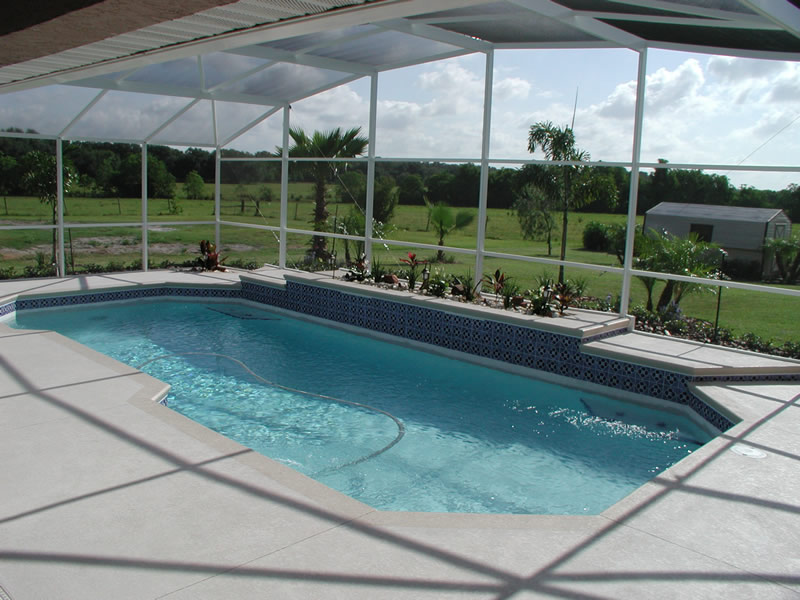Steps to Winterize Your Florida Pool.
- Clean the pool thoroughly.
Whether opened or closed, clean the pool thoroughly to prevent algae buildup, stains and clogged pumps. Old leaves can stain the pool sides, clog the drains and promote algae, which increases your chores and costs when reopening the pool later. Use a leaf skimmer to remove leaves and debris from the surface, and clean up sunken debris with a pool vacuum.
- Balance the chemicals.
Maintain the pool’s chemicals in the winter as you would in the summer. At the very least, balance the chemicals at least one week before you plan to close the pool. On average, calcium hardness should be around 200 PPM and alkaline levels between 80 and 120 PPM depending on your pool. You don’t have to lower the water or drain the pipes if you keep the pool open, as the Orlando weather rarely drops below freezing in the winter.
- Run the pump.
If you plan to close your swimming pool completely, run the pump for at least six hours a day to help skim debris out of the pool and to circulate the water. In the rare case that the temperature drops near or below freezing, keep the pump running throughout the day and night. Failure to run the pump could increase the risk of plumbing damage. Another reason to run the pump is the additional circulation also helps if you need to add chlorine at any time. Using a floating chlorinator without the pump running can also damage the pool’s surface without proper circulation.
- Remove the pool accessories.
Remove any pool toys from the water, and detach the ladders and handrails if you plan to use a pool cover. Take out anything that could collect rainwater, such as inflatable loungers and other pool floats. These items not only get in the way of a pool cover but also create breeding grounds for mosquitoes and other bugs.
- Use a swimming pool cover.
Covering the pool, even if you don’t plan to perform any further winterizing steps, reduces your cleaning, chemical and filtering chores. The cover should not have large gaps or holes where debris could enter the pool. A mesh-type cover protects the pool from dirt, debris and leaves and prevents accidental drowning and submersion if someone steps onto the covered surface. It also doesn’t require a cover pump, as rainwater seeps through the surface and into the pool.
It only takes a few steps to winterize pool for the season.
- Keeping up with regular cleaning
- Using a pool cover
- Running the pump up to six hours per day to distribute the chemicals and improve circulation. As the water temperature drops, you can reduce the number of chemical and filtration chores you must do to optimize your pool until the next reopening.
By taking these steps to winterize your pool, it will take that much less time to “re-open” your pool for the next swimming season.
Whatever your pool need is, we can help because we want to help you make sure your pool is perfect for you and your family! We invite you to experience the Osceola Aquatics difference since 1981. Whatever your pool need is, Osceola Aquatics can make it happen, and happen as you envision it! Osceola Aquatics is one of Central Florida’s most trusted pool contractors. We are conveniently located at 1551 Kelley Ave, Kissimmee, FL 34744. Take the next step to your dream pool by calling 407-846-1430 for a consultation today or contact us online at Osceola Aquatics.


Recent Comments